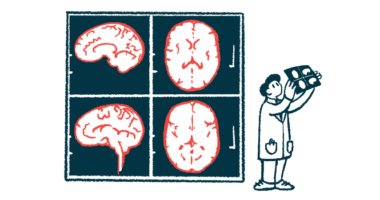People with Parkinson’s tremor asked to take part in survey
Participation expected to help in better understanding, treating of symptom

Parkinson’s disease patients who experience tremor are invited to complete an online survey aimed at assessing the difficulties due to this common disease symptom, with an ultimate goal of promoting more effective treatments.
The survey, called the “Burden of Tremor in Parkinson’s Disease,” is a collaboration between PMD Alliance, a nonprofit disease advocacy group, and Robert Hauser, MD, a neurology professor and director of the University of South Florida’s Parkinson’s Disease and Movement Disorders Center. PMD Alliance works to support those affected by movement disorders.
Participation by at least 500 people with Parkinson’s tremor is wanted by organizers, and surveys can be completed by a patient or caregiver.
“A small survey we conducted several years ago indicated that tremor was the most common complaint of people with Parkinson’s disease for the first 10 years from diagnosis, and this is what I see in my practice every day,” Hauser said in email correspondence with Parkinson’s News Today.
Better understanding needed of tremor, a common Parkinson’s symptom
“However, treatment options are limited and we understand little about how tremor actually impacts patients. Does it interfere with function? Does it feel uncomfortable? Is it distressing?,” Hauser wrote. “The goals of the current survey are to understand how tremor impacts people with Parkinson’s disease, and ultimately, to encourage development of better treatments for this aspect of the disease.”
Parkinson’s motor symptoms are characterized by changes in movement that include tremor — the uncontrollable muscle contractions that manifest as shaking, usually affecting the hands. About 70%-90% of patients experience tremor at some point, although this symptom can be less common at younger ages.
The primary tremor type in Parkinson’s is known as resting tremor, marked by noticeable shaking of a patient’s limb, head, or body despite a lack of deliberate movement. It is during conscious movement that resting tremor often loses intensity or seems to disappear altogether. Another and less common tremor type, called Parkinson’s action tremor, occurs with voluntary movement.
Tremor generally makes it more difficult for patients to perform everyday activities that require fine motor coordination, such as writing, shaving, or getting dressed. They typically affect one side of the body before spreading to both sides.
While disease medications and surgical procedures can help in managing tremor, they are not always fully effective and can have side effects.
Survey estimated to take up to 30 minutes to complete
The aim of the questionnaire — expected to take between 20-30 minutes to complete — is to gain more detailed insights into the impact of tremor on patients’ daily life, which could help in treatment development and clinical trial design. Responses will remain anonymous.
“By joining the survey, you become an integral part of the effort to shape future awareness, treatment strategies, and support systems,” the PMD Alliance states in a press release.
“Your unique perspective is crucial in advancing our understanding of Parkinson’s disease and advocating for improved resources and support,” it adds.
Summarized survey results will be shared with the University of South Florida, Jazz Pharmaceuticals, and the scientific community at large.
Suvecaltamide, a potential oral treatment for tremor being developed by Jazz, is currently in a global and placebo-controlled Phase 2 clinical trial (NCT05642442) enrolling up to 160 adults, ages 40 to 85, with Parkinson’s disease and inadequately controlled tremor. The 17-week efficacy and safety study is recruiting eligible patients at sites across the U.S. and in Germany, Poland, and Spain.







